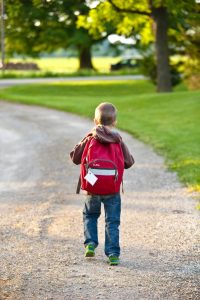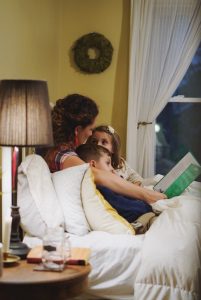Authored by Pattie Carroll
 During the uncertain times of COVID-19, family routines can provide structure and predictability. The transition from summer vacation to back to school can be a challenging time to establish routines, however children need patterns they can count on. Whether children are going to school in person or from home, structure promotes reassurance and a sense of safety. Also, research shows that routines can promote positive physical and mental health.
During the uncertain times of COVID-19, family routines can provide structure and predictability. The transition from summer vacation to back to school can be a challenging time to establish routines, however children need patterns they can count on. Whether children are going to school in person or from home, structure promotes reassurance and a sense of safety. Also, research shows that routines can promote positive physical and mental health.
I believe routines are important because they give children a sense of security and control over their environment. Furthermore, routines help children learn what to expect at different times of the day. Children feel pride and satisfaction when they can participate in and perform these routines.
Children thrive when routines are regular, predictable, and consistent. Remember, creating a daily schedule that works for you and your family is a good start. There are no rules about how many or what kind of routines you should have. Families are different, and what works well for one family might not work for another.
Routines need to be based on individual family needs. But effective routines share three key characteristics:
- Routines need to be well planned: in a good routine, everyone in the family understands their roles and sees their roles as reasonable and fair. For example, your children know that they turn off electronics 30 minutes before bed.
- Routines need to be regular: good routines become part of everyday family life. For example, you might all look forward to Sunday night dinner with grandparents.
- Routines need to be predictable: in a good routine, things happen in the same order each time. For example, Saturday is laundry day, so everyone in the family knows to get their laundry bundled and in the laundry room by Saturday morning.
Here are five tips to establish successful routines with your child.
- Daily routines such as washing hands before meals or reading before bed add consistency to a child’s day.
- A daily schedule gives children a sense of security and control. For young children add pictures to the schedule so children can see what’s next. Or post pictures of daily activities on a clock face so children learn what to expect at different times of day.
- Remind children of what is happening next in the routine to help them transition more easily between activities (“After breakfast, it is time to brush your teeth.”)
- Encourage children to lead the routine, for example, by picking their own clothes, choosing what app to do, or feeding themselves.
- Establish and stick to a routine. Children will be more cooperative when they know what to expect.
Lastly, parents, be kind to yourselves. Transitions are hard even in the best of times. These are hard times and any routine you can establish for your family is better than none.
All the Best,
Patricia Carroll | UW-Madison, Division of Extension
Associate Professor, Dept of Family Development
Human Development & Relationships Educator, Dodge County




